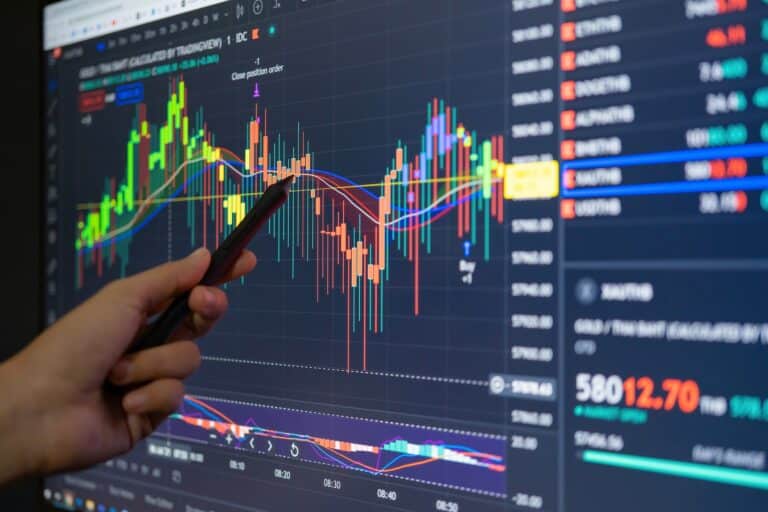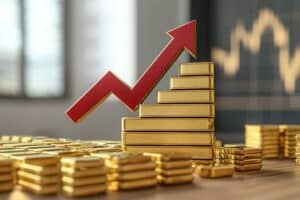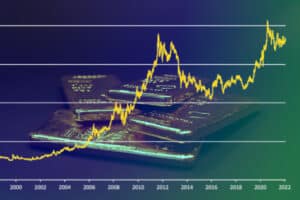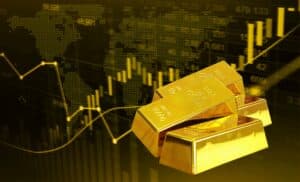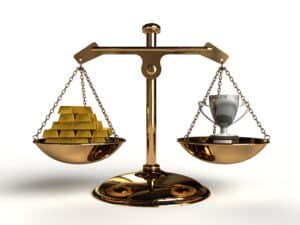The link between economic indicators and their political meaning can be confusing. Economic indicators are powerful tools that provide crucial insights into gross domestic product, employment rates, and various other important aspects of an economy. They serve as analytical tools for economists and guide policymakers in shaping economic policy.
Politicians, policymakers, and even voters closely monitor these indicators, as they can signal the need for policy adjustments, influence election outcomes, and shape public opinion about the effectiveness of government policies. Understanding these indicators is important to understand the language of the economy – a language that facilitates conversations between economics and politics.
Understanding Economic Indicators
Economic indicators are statistical data that interpret current economic conditions and predict future economic trends. They provide information about various aspects of the state of an economy, including its growth, stability, and overall performance. Governments, businesses, investors, and economists use these indicators to make informed fiscal policy, investment strategies, and financial planning decisions.
Interpreting economic indicators requires expertise and a deep understanding of the economy. For example, a declining unemployment rate is generally seen as a positive sign for the economy, indicating that more people are finding work. However, if a significant increase in inflation accompanies this decline, this could suggest that the economy is overheating, leading to unsustainable growth.
The Three Groups Of Economic Indicators
Economic indicators can be divided into three main types: leading indicators, contemporaneous indicators, and lagging indicators. Each provides different insights into the economy’s current and future conditions.
Leading Indicators
As potential harbingers of future economic trends, leading indicators are an important tool for investors. They consist of selected economic statistics that tend to change before the overall economy undergoes significant adjustments and are helpful in predicting potential developments.
From an investor’s perspective, these early warning systems enable proactive decisions to capitalize on impending economic changes. They provide forecasts of the overall state of an economy and thus significantly influence investment strategies.
From a political perspective, these leading indicators show the advantages or disadvantages of implemented measures – an aspect to which political economists pay great attention when analyzing the link between politics and the economy.
Coincident Indicators
Random indicators have a direct impact on policymaking. Economic perceptions influenced by these indicators shape policy preferences and government support. For example, if coincident indicators show a strong economy with low unemployment rates and steady GDP growth, policymakers may be more inclined to implement policies that promote business expansion and job creation.
Investors should pay close attention to coincident indicators, among other economic metrics. By using these indicators to build a picture of the current state of the economy, investors can make strategic investment decisions based on real-time data rather than relying solely on past performance or speculative forecasts.
Lagging Indicators
Lagging indicators reflect historical performance and can be identified after an economic trend or pattern has emerged. They confirm economic changes predicted by leading indicators or revealed by coincident indicators.
By analyzing lagging indicators such as unemployment rates, consumer price index (CPI), GDP growth rate, and industrial production index, investors gain important insights into the current state of the economy.
This information helps them make more informed investment decisions based on a deeper understanding of how government policies and interventions affect economic performance.
For policymakers and government officials, lagging indicators provide valuable feedback on the effectiveness of their policies and actions. By evaluating these metrics, they can assess whether their policies produce positive changes or adjustments for future economic planning.
A Deeper Dive Into Key Economic Indicators and Their Significance
Understanding these indicators helps us make sense of complex economic phenomena. They allow us to assess the state of the economy, predict future trends, and understand the impact of policies and global events, making them indispensable tools in the world of economics and beyond.
Gross Domestic Product
Gross Domestic Product (GDP) is one of the most important economic indicators for measuring an economy’s overall health and growth. It represents the total value of all goods and services produced in a country during a given period and is usually measured quarterly or annually.
GDP provides valuable insight into economic activity by capturing consumer spending and business investment. As an indicator, GDP reflects the size and direction in which an economy moves. Positive GDP growth indicates an economy is expanding, while negative growth indicates contraction or recession.
GDP is of great political importance because it influences government policy and decision-making processes. For example, when GDP growth is robust, governments often introduce expansionary fiscal policies, such as increased infrastructure spending or tax cuts, to further stimulate economic activity. In contrast, during low or negative GDP growth periods, policymakers may adopt austerity measures to reduce public spending and address budget deficits.
Politicians often use changes in GDP to highlight their successes or criticize opponents’ performance when courting public support in elections. Positive changes in economic performance can increase incumbents’ chances of re-election by presenting successful management policies that lead to greater prosperity for citizens, but they can also be vulnerable if recessions occur under their leadership.
Unemployment Rate
The unemployment rate is one of the most important economic indicators, providing crucial insights into the state of an economy. It measures the percentage of the labor force actively seeking employment but unable to find a job. This indicator is significant because it reflects the overall employment opportunities and can have profound policy implications.
High unemployment rates often lead to public discontent and dissatisfaction with incumbent governments because they impose economic hardships on individuals and families. Governments are held accountable for their ability to address this problem through effective policies and programs to reduce unemployment rates.
Conversely, low unemployment rates are positive indicators of a strong economy and can increase public confidence in government leadership. They indicate a large supply of jobs, which can contribute to higher consumer spending and economic growth.
In addition, fluctuations in the unemployment rate can influence policymaking, especially during election campaigns. Candidates often emphasize their plans to create jobs and reduce unemployment in their election platforms, knowing voters attach great importance to this issue.
Inflation Rate
The inflation rate is an important economic indicator that measures the rate at which prices for goods and services increase over time. It reflects the erosion of purchasing power and can have significant policy implications.
High inflation can lead to public discontent and dissatisfaction with government economic policies. Rising prices make people feel financially burdened, lowering their living standards and fueling social unrest.
On the other hand, low or stable inflation rates are generally seen as positive indicators of economic stability and can boost public confidence in the government’s ability to manage the economy effectively.
Consumer Confidence Index
The Consumer Confidence Index is an important economic indicator that measures the degree of optimism or pessimism consumers have about the overall state of the economy. It reflects their confidence in their financial situation and willingness to spend money on goods and services.
This index is important because consumer spending drives significant economic activity. High consumer confidence usually leads to increased spending, which boosts economic growth.
On the other hand, if consumer confidence is low, people tend to be more cautious in their spending, which can have a negative impact on the economy. The consumer confidence index provides valuable insight into public sentiment toward the economy and can influence government policies to boost consumer confidence and promote economic growth.
Producer Price Index (PPI)
The Producer Price Index (PPI) measures average price changes for domestic producers of goods and services. It provides valuable data on the rate of change in sales prices received by U.S. producers, excluding taxes, representing price fluctuations as products leave the manufacturer.
Policymakers can monitor changes in business input costs and evaluate factors affecting profitability and consumer prices. For investors, understanding the meaning of the PPI is important to predicting market movements. Because this index reflects changes in production costs, it provides insight into potential impacts on profit margins and consumer purchasing power.
Balance Of Trade
The trade balance is an important economic indicator that investors should pay attention to. It refers to the difference in value between a country’s exports and imports of goods and services over time.
It measures whether a country sells more goods abroad than it buys from other countries (trade surplus) or vice versa (trade deficit). This indicator provides information about a country’s economic performance and can be of significant political importance.
Understanding the trade balance is important because it can influence various aspects such as economic policy, currency strength, and tariffs. Policymakers and economists often consider this indicator when formulating strategies to improve their country’s economy.
Investors need to keep an eye on the trade balance, as it can provide valuable insight into potential investment opportunities. By monitoring changes in this indicator over time, investors can identify trends that may impact specific industries or sectors.
Stock Market Performance
Stock market performance is an important economic indicator that has significant policy implications. It reflects overall health and confidence in the economy and influences government policy and public opinion.
When stock markets boom, it shows strong investor confidence and can increase business activity, job creation, and economic growth. On the other hand, a decline in stock market performance can cause panic among investors and lead to a decline in consumer spending and investment.
The government closely monitors stock market trends, influencing policy decisions regarding taxes, regulations, and stimulus measures. In addition, stock market performance strongly influences public perceptions of the economy.
The Political Significance Of Economic Indicators
Economic indicators link the economic and political landscapes, influencing policy decisions, election outcomes, and public sentiment. Understanding their political significance is key to comprehending the complex interplay between economics and politics that shapes our societies.
How Economic Indicators Impact Government Policies
Economic indicators play a crucial role in shaping government policy. They provide policymakers with valuable insights into current economic conditions and help them make informed fiscal and monetary policy decisions.
For example, if GDP growth is weak, indicating a slowdown in economic activity, the government may launch stimulus packages to boost spending and investment. Similarly, high unemployment rates may prompt policymakers to launch job creation initiatives or revise labor market regulations.
By closely monitoring economic indicators such as inflation rates, consumer confidence index, and stock market performance, governments can assess the effectiveness of their policies and adjust them accordingly to achieve the desired results.
Economic Indicators as Tools for Policy Argumentation
Politicians often rely on economic indicators to support their policy arguments. A legislator arguing for fiscal stimulus might cite high unemployment rates and sluggish GDP growth as evidence that such measures are necessary. Conversely, indicators such as low inflation and positive consumer confidence could serve as arguments against the need for such stimulative policies.
These indicators provide objective data that can confirm or refute policy positions. They serve as a common language across party lines, enable more fact-based discussions, and help ground policy debates in concrete economic realities.
Influence on Public Opinion and Elections
When citizens experience positive economic conditions such as low unemployment rates, higher GDP growth, and rising incomes, they tend to have more confidence in the government’s ability to manage the economy effectively. This can strengthen support for incumbent political leaders or parties seen as responsible for favorable economic conditions. On the other hand, if economic indicators paint a negative picture with high unemployment rates, inflation, or stagnant wages, this can lead to public discontent and a desire for a change in leadership.
Economic indicators influence election outcomes by shaping voters’ perceptions of various policies and candidates. Voters often prioritize their economic well-being when deciding how to vote. Candidates who propose policies focused on improving key economic indicators may rise in favor of voters seeking solutions to their financial challenges.
These indicators serve as objective measures of a government’s performance and the effectiveness of its policies. If voters have the impression that a particular political party has not achieved positive economic results despite being in power, this may lead them to question the party’s competence and to consider alternatives at election time.
Invest In Precious Metals Today
In this unpredictable economic climate, it may be a strategic move to secure your financial future by diversifying your investment portfolio with precious metals. Whether you want to open a Precious Metals IRA or buy physical bars or coins, Noble Gold Investments offers a range of options tailored to your needs.
As a physical asset, gold holds intrinsic value and serves as a tangible hedge against inflation and currency fluctuations. It’s shown to be a great store of value that retains its value over time, even when other investments falter. In economic uncertainty or instability, gold often outperforms other assets, making it an effective portfolio diversifier.
Investing in precious metals isn’t just about protecting your wealth; it’s about building a solid foundation for your future. Call us today or click here to open an account and take the first step in alternative investing.


